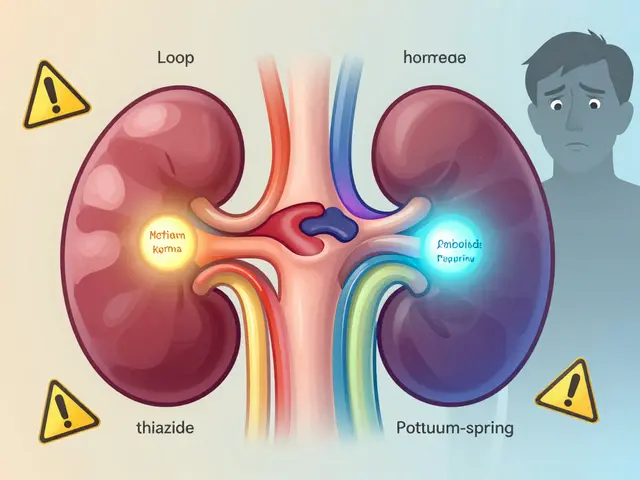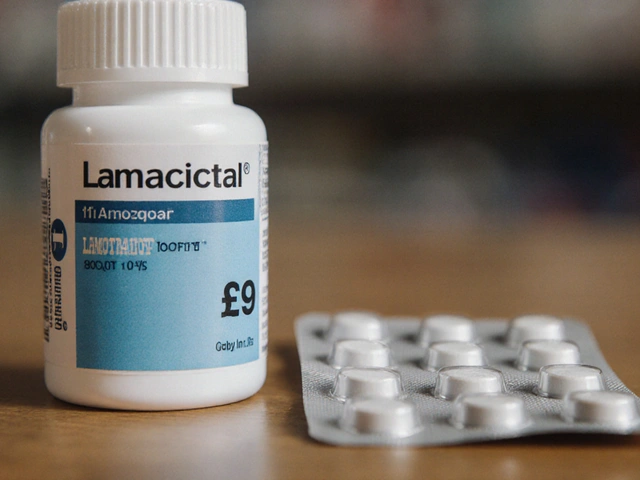Dosulepin and ECT: Unpacking Potential Interactions
February 23 2025Furosemide alternatives
Furosemide (Lasix) works well to remove excess fluid, but it isn’t the only option. If furosemide causes side effects, doesn't control symptoms, or you need a different approach, there are clear alternatives. Below I break down the common drug choices, when clinicians pick them, and non-drug measures that help cut fluid and swelling.
Drug alternatives
If you need another loop diuretic, two common swaps are bumetanide and torsemide. Both are loop diuretics like furosemide; they are more potent by milligram and sometimes work better when absorption or response to furosemide is poor. Clinicians may prefer torsemide for more predictable absorption and a longer action in some patients.
For mild fluid retention or high blood pressure, thiazide diuretics offer an alternative. Drugs such as hydrochlorothiazide, chlorthalidone, and indapamide reduce blood volume slower than loops and often help with long-term blood pressure control. Thiazides are less effective for large-volume edema from heart failure or kidney disease.
Potassium-sparing diuretics address a common furosemide problem: low potassium. Spironolactone and eplerenone block aldosterone and are useful for conditions like heart failure, cirrhosis with ascites, or hyperaldosteronism. Spironolactone is cheap and effective but can cause hormonal side effects in men and women; eplerenone has fewer sex-hormone effects. Other potassium-sparing options include amiloride and triamterene, which help preserve potassium when combined with thiazides or loops.
Non-drug options and monitoring
Med changes aren't the only way to manage fluid. Cutting back on salt, limiting how much you drink if advised, losing excess weight, and wearing compression stockings for leg swelling can make a big difference. For people with heart failure, a daily weight log helps spot fluid gains early so adjustments happen before a huge problem develops.
Whatever alternative you consider, lab checks matter. Diuretics affect sodium, potassium, creatinine, and sometimes magnesium. Doctors usually check blood tests after starting or changing doses and adjust treatment based on results and symptoms like dizziness or muscle cramps.
Switching diuretics sometimes means combining classes for better control: a low-dose thiazide with a loop, or adding a potassium-sparing drug to prevent low potassium. Those choices depend on the cause of fluid, other health problems, and other medicines you take.
If you have swelling from heart failure, liver disease, kidney disease, or a new reaction to furosemide, talk with your clinician. They'll consider the underlying condition, side effects you experienced, and tests to pick the safest, most effective alternative for you.
Quick practical tips: track your symptoms each day—weight, ankle swelling, shortness of breath, and how often you urinate. If you feel dizzy, very thirsty, notice muscle cramps, or your heart races after changing a diuretic, call your doctor. Don't stop or swap diuretics on your own. If low potassium is a problem, your clinician may suggest a potassium supplement or a potassium-preserving drug rather than stopping treatment. Also mention other meds you take—NSAIDs, ACE inhibitors, or herbal supplements can change how diuretics work. A short, clear talk with your clinician usually sorts the safest next steps. Start this conversation before changing treatment.
 22 Mar
22 Mar
Top 10 Alternatives to Furosemide in 2025: Exploring Your Options Now
Explore the top 10 alternatives to Furosemide available in 2025 with this comprehensive guide. Learn about different medications that offer effective solutions for hypertension and fluid retention. Compare the pros and cons of each option to find the best fit for your health needs. Discover the latest advancements in diuretic treatments and make informed decisions for better wellness.
Read More...




